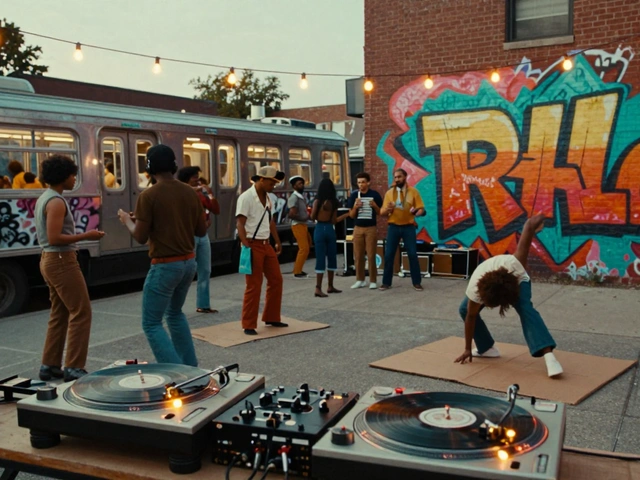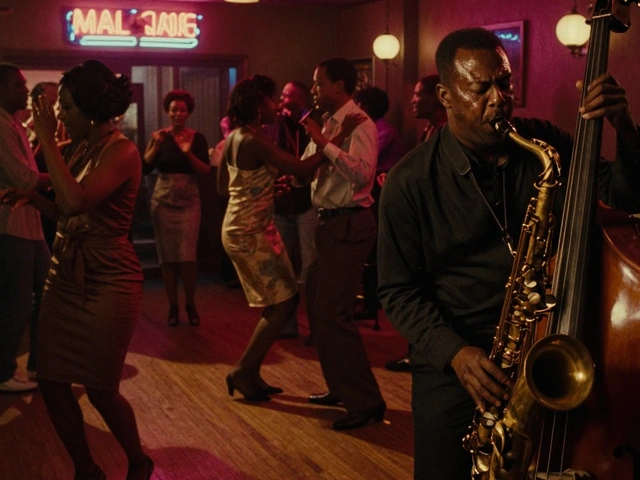If human hearts had a soundtrack, soul music would be belting out the chorus. Think about it: you could be halfway through a rough day, then Marvin Gaye's "What's Going On" swirls through the room—and suddenly, your tension melts. Are you tearing up at Aretha Franklin’s voice, or is your cat Muffin just cutting onions again? Turns out, it's more than nostalgia or a catchy beat. Science actually has a lot to say about why soul music tugs so fiercely at our emotions. It's a cocktail of musical structure, brain chemistry, cultural roots, and a dash of plain old magic.
Soul Music’s Roots and the Making of Emotional Sound
Let’s start with where it all began. Soul music didn't just pop out of nowhere; it's a mix of gospel, rhythm and blues, jazz, and even a bit of rock and roll. Back in the late 1950s and ’60s, artists like Ray Charles and Sam Cooke took gospel’s emotional intensity and dropped it right into popular music. It’s not just about the music itself, but the real human experiences baked into every lyric and riff. These weren't songs crafted in fancy studios by faceless teams—they were coming from people who’d lived deep pain, powerful love, and everyday hope.
What really sets soul apart is the voice. Those powerful, almost raw vocals aren’t an accident. Singers use a technique called “melisma” to stretch syllables across several notes, making a simple word hit like a punch to the gut. There’s science behind it too: the voice is loaded with micro-expressions—tiny tonal changes our brains decode almost like facial expressions. That's why you can feel a singer’s heartbreak or joy without hearing a word of the lyrics. Even if Squawk the parrot croaks out a note, you’re probably more moved by Otis Redding’s raspy cry. No shade to Squawk, but science backs Otis, sorry mate.
Soul music also leans on call-and-response patterns from African-American church traditions. That back-and-forth isn’t just flashy style. When you sing along, your brain releases bonding chemicals like oxytocin. No wonder everyone at a soul concert leaves feeling like family, even if they just met.
How Soul Music Connects With Your Brain
Okay, here’s where things get really juicy. Neuroscientists have found that listening to soul music lights up the same reward centers in your brain as chocolate or falling in love. Yep, your favorite Al Green record is giving you a legit brain buzz. It all starts with dopamine—the brain’s “feel good” chemical. Scientists at McGill University in Canada even did brain scans while people listened to music, showing huge dopamine spikes as those sweet, soaring choruses hit.
The thing is, soul’s signature sound pushes your emotional buttons in a bunch of ways. The chord progressions—those little journeys from minor to major keys—mirror the way we move through feelings: sadness, hope, relief. Think about that moment in Bill Withers’ "Ain’t No Sunshine" where the music drops and the word ‘I know’ repeats. Your brain can’t help but lean in, anticipating the next change. That suspense triggers emotional release.
Rhythm matters too. Soul grooves often match the pace of a calm human heartbeat, and their syncopation creates this push-pull effect that mimics real human conversations. When your body recognizes that, it reacts physically—goosebumps, lump in your throat, heart thudding along. Emotional? Heck yes, and there’s a scientific reason for every shiver.
One wild fact: studies out of Germany show that when people listen to their favorite soul songs, brain regions linked to empathy light up like Christmas trees. You’re literally feeling someone else’s pain, joy, longing, or triumph through the music. Your own stories and struggles get mirrored back in a way that feels personal, even if you’ve never been in Memphis, never lost a love, never belted it out in church.

The Role of Lyrics and Storytelling in Soul
Let’s talk words. Lots of popular music leans on catchy hooks, but soul gets under your skin because its lyrics don’t hide from real life. Every classic track—from Otis Redding’s "Try a Little Tenderness" to Etta James’ "I’d Rather Go Blind"—reads like an unfiltered diary entry. The details are specific. Unlike pop songs that skate around the edges, soul tells stories about heartbreak, injustice, hope, and resilience. It’s direct, honest, and leaves nowhere to hide.
There’s a neat brain trick going on here: Specific, heartfelt lyrics activate your brain’s visual centers. That’s why Marvin Gaye singing "Mother, mother / There’s too many of you crying" doesn’t just register as sound; you picture it. Your imagination kicks in, you empathize, you almost live the scene. This narrative power is so strong it’s used in therapy. Music therapists often recommend soul music for clients struggling with big emotions—they say hearing someone else’s vulnerability can dissolve loneliness and spark a little hope.
But it isn’t just about pain. There’s joy, grit, and humor in the stories too. When Aretha Franklin demands respect, she’s not just singing—she’s practically giving you a pep talk. That sense of agency—knowing you can push back, claim your worth—actually changes your body’s stress response, according to a study from the University of Sydney. That’s a long way from the church pew, but Aretha’s shout still thunders down the years and right into your Monday blues.
Cultural Memory and Connection Through Soul Music
Let’s get real: Soul music is more than sound waves bouncing off eardrums. It’s a living vehicle for history and culture. In the 1960s, songs like Sam Cooke’s "A Change is Gonna Come" weren’t just hits—they were anthems for social movements. When a community is hurting or hoping, soul captures and reflects the moment. You aren’t just hearing a song; you’re standing in someone else’s shoes, feeling their fight, catching their hope as if you were in the crowd back then.
Music psychologists love to talk about "musical memory." Basically, those soul classics embed themselves in your brain so deeply that hearing them years later floods you with emotional snapshots. You remember the car ride, your mum’s record player, dancing in the kitchen while Squawk shrieks overhead. All of this forges community—across generations, borders, even species (trust me, Muffin has some strong opinions about Aretha Franklin).
Even if you didn’t grow up with soul music at home, there’s something universal about its themes. Loneliness, longing, hope for better days—these things hit every human heart eventually. Thanks to the power of the internet, new generations keep stumbling onto old soul masterpieces. Streaming data shows a spike in 18-24 year-olds listening to artists like Curtis Mayfield during stressful times—proof you don’t need to live through the Civil Rights era to feel the ache and the hope shimmering out of those records.
So when you meet fans of soul at a barbecue or discover fellow Otis lovers at the dog park, you’re joining a worldwide tribe. If you’re ever feeling isolated in a new city (Adelaide, anyone?), a classic soul night at the pub can make you feel at home before the first verse ends.

How to Get the Most From Soul Music’s Emotional Magic
So, how do you tap into all this juicy emotional energy? Here are a few non-boring ways to go deeper with soul music—and milk every drop of that emotional power.
- Listen With Intention: Don’t just put soul music on in the background while you fold laundry. Use good headphones, close your eyes, and notice the tiny details—the way the bassline grooves, the rough edge of the singer’s voice, the pauses. Each element has a purpose.
- Mix Up Your Playlist: Don’t just recycle the same hits. Check out lesser-known tracks or live recordings. Sometimes a raw live take will gut-punch you in a way polished studio versions can’t. Try Ann Peebles, Donny Hathaway, or Bettye LaVette if you want to dig deeper.
- Share the Experience: Listen with friends or family. Even if Muffin and Squawk are your only company, talking about how a song makes you feel can unlock different emotional angles. You might catch feelings you’d miss listening alone.
- Dig Into the Stories: Look up the background on your favorite tracks. What was happening in the artist’s life? The time period? The more you know about what inspired a song, the more it comes alive when you hit play.
- Use Soul to Boost Your Mood: There’s evidence that those dopamine sparks actually help with anxiety and depression. Try making a "feel better" playlist—go for classics like "Lovely Day" by Bill Withers or "Let’s Stay Together" by Al Green.
If you want to try creating soul music yourself, remember: let your guard down. Don’t overthink the notes or polish every phrase until it squeaks. Soul is about telling the truth, and your audience will feel every ounce of it. Look up simple soul grooves, experiment with your own voice, maybe even borrow a Motown trick or two—stacking handclaps, echoing backgrounds, letting every shiver show.
Soul music is about leaving a piece of yourself in the song, trusting that someone out there is waiting to hear it. That’s the magic science can measure, but never quite explain. Next time a soul track cracks you wide open, before you reach for a box of tissues, just know: you’re not alone. There’s a whole world of listeners—past, present, and maybe even a few pets—feeling it right along with you.






